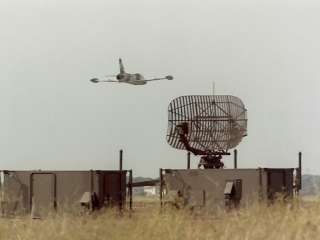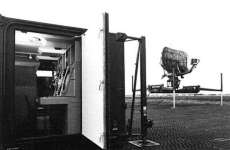Pluto
Description of the radar set, tactical-technical characteristics

Figure 1: Pluto
| Specifications | |
|---|---|
| frequency: | S-Band |
| pulse repetition time (PRT): | |
| pulse repetition frequency (PRF): | random stagger |
| pulsewidth (τ): | |
| receive time: | |
| dead time: | |
| peak power: | 135 kW |
| average power: | |
| instrumented range: | 60 NM (≙ 110 km) |
| range resolution: | |
| accuracy: | 40 m; 0.35º |
| beamwidth: | 1.5º |
| hits per scan: | |
| antenna rotation: | 12 or 15 rpm |
| MTBCF: | |
| MTTR: | |
Pluto
The Pluto is an operating in S-Band low-level coverage surveillance radar for air and coastal defence, designed to detect medium, low and very low-flying aircraft and small surface vessels. Pluto provides 2-D primary and secondary surveillance radar target detection. The primary radar is fitted with an integrated secondary identification friend-or-foe radar. It consists of one equipment shelter, one antenna module and a power generator trailer. The transmitter, receiver and processing equipment are all housed in the shelter. The radar is provided with a datalink interface for connection to an operational shelter or to a control center.
The antenna fed by a group of feed horns is a double curved parablic reflector generating a cosecant-squared pattern. The polarisation is (selectable) horizontal linear or circular. The transmitted waveform is a code agility phase code modulated pulse. The final stage of the transmitter is a Traveling Wave Tube.
Pluto is often a part of the Mobile Automatic Reporting Station MARS-402, that consists of the Pluto radar sensor, an operation section (incl. communications subsystem) and power supply. A reduced-range version of Pluto (50 … 60 km) is used to supply surveillance data for the Spada air defence system. Its antenna rotates with 30 rpm then.

